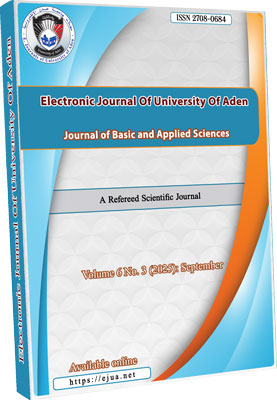HYDROTROPIC SOLUBILIZATION: AN EFFECTIVE TECHNIQUE FOR ENHANCING THE SOLUBILITY OF ANTIDIABETIC DRUG GLIMEPRIDE
DOI:
https://doi.org/10.47372/ejua-ba.2025.3.459Keywords:
Glimepiride, Solubility enhancement, Hydrotropic agents, Solid dispersions, In vitro drug dissolutionAbstract
Solubility, a key physicochemical property, determines a substance’s ability to dissolve in a solvent. Glimepiride, a BCS Class II drug for type 2 diabetes, exhibits very low aqueous solubility and high lipophilicity, which complicates formulation and may cause variable bioavailability and therapeutic failure. Hydrotropy which enhances aqueous drug solubility without micelle formation can allow higher drug loading with low toxicity. This study aimed to improve glimepiride’s aqueous solubility and bioavailability using hydrotropic agents. Solubility was measured in water, saline phosphate buffer, ethanol, and methanol, and in solutions of five hydrotropic agents (sodium benzoate, mannitol, urea, sodium acetate, and sodium citrate at 10–40% w/v). Drug solubility was also evaluated in binary and ternary mixtures of these hydrotropic agents'. The in vitro dissolution of glimepiride was assessed for a physical mixture and for solid dispersions with sodium citrate prepared by solvent evaporation and kneading. Glimepiride solubility in water was 2.83 µg/ml. The greatest solubility enhancement (ratio 284.33) was achieved with 40% sodium citrate, yielding 803.79 ± 0.015 µg/ml. Production yields for the physical mixture and solid dispersions ranged from 95.44 ± 1.95% to 101.80 ± 2.36%, and drug content varied from 87.00 ± 0.32% to 101.34 ± 0.26%. The fastest and complete in vitro dissolution; 99.95 ± 0.78% (DE 80.51%) within 30 minutes was observed for the solid dispersion prepared by the kneading method, compared with 62.35 ± 0.54% (DE 50.95%) for the pure drug. FTIR analysis indicated hydrogen-bond interactions between glimepiride and sodium citrate. In conclusion, sodium citrate, enhance glimepiride’s solubility and dissolution from solid dispersion especially by kneading method.
Downloads
Downloads
Published
How to Cite
Issue
Section
License

This work is licensed under a Creative Commons Attribution-NonCommercial 4.0 International License.










